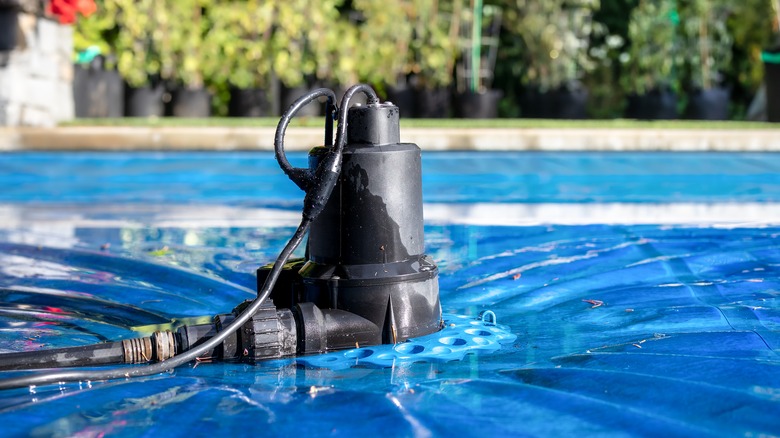Though there are some major advantages to having a pool at home, it’s a big responsibility, as well. Maintaining your pool and balancing the chemical levels requires a good bit of attention and effort. However, if a big storm comes and your pool begins to overflow, you may find that you have an even bigger task on your hands.
An overflowing pool is problematic for more reasons than you might expect. Overflow can cause damage to the area immediately surrounding your pool and could end up cracking the pool deck. Rain runoff can also carry contaminants into your pool and this can cause unnecessary strain on pool equipment. The filter pump may attempt to work twice as hard to keep your pool clean. In severe cases, overflowing water could also wreak havoc on your yard or lead to house flooding, causing damage that will be costly and time-consuming to repair.
So what can you do to minimize the impact of an overflowing pool? Primarily, you’ll want to look for a way to drain the water and bring your pool back to normal levels again. You may also need to remove debris from the pool, add chlorine, and make adjustments to the pool’s pH levels. Additionally, you’ll also want to assess the damage done to your yard and home. You may need to remove standing water from your lawn or make more extensive repairs.
How to reduce water levels after your pool overflows

Aside from getting a pool service professional’s help, there are several ways to successfully drain an overflowing pool and reduce water levels after a big storm. The three main options are to drain the pool with a pump drain spigot, siphon off the excess water, or use a submersible pump.
If there’s a drain spigot on your pool’s pump, using it will be the easiest method of draining excess water from your pool. To use it, you’ll simply need to connect one end of a hose to the drain and the other to the spigot. Then, open the drain. You can also reduce your pool’s water levels by draining it into your neighborhood’s street drains. To do this, place one end of a garden hose in your pool and connect the other to a spigot. You’ll then turn the water on full blast for about 30 seconds, before detaching the hose from the spigot and placing the end of the hose into a drain.
Finally, you may want to use a submersible pump. If your pool doesn’t overflow regularly, you may want to rent a pump instead of buying one. To use the pump, you’ll simply need to submerge it in the pool and follow the directions. The process will typically consist of attaching hoses and plugging the pump into a power outlet.
Preventing future pool overflow issues
It’s much better to prevent problems in the first place than to correct them after something goes wrong. After reducing your pool’s water levels, take steps to reduce the chance of future issues. First of all, you’ll want to correct poor water drainage in your yard. Installing a French drain, building a retaining wall, and improving lawn aeration are just a few of the ways that you can do this. Sloping your pool’s deck to direct rainwater away from the pool can also be a helpful solution. If your pool doesn’t already have them, then hiring a contractor to install pool overflow drains is also a good idea.
If you discover that a big storm is on the way, it’s always a good idea to take some extra precautions if you think that your pool is vulnerable to overflow issues. Preparing your pool before the storm arrives could save you a lot of trouble and prevent you from needing to take the steps listed above. Consider putting away pool equipment that could get damaged and reduce water levels ahead of the storm to minimize potential headaches.